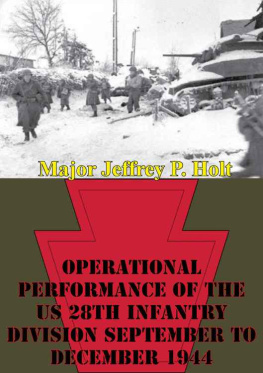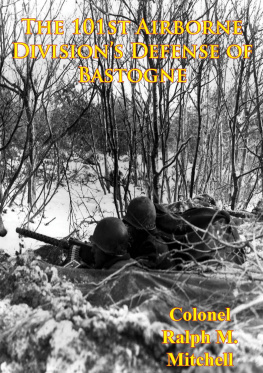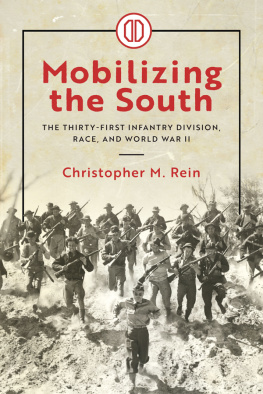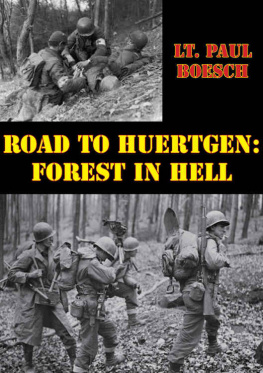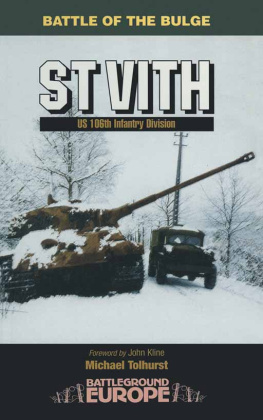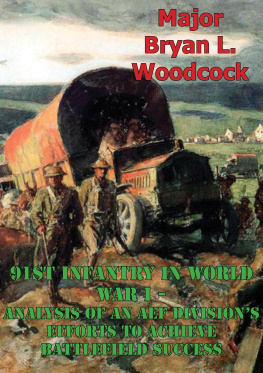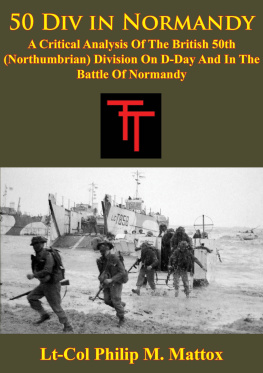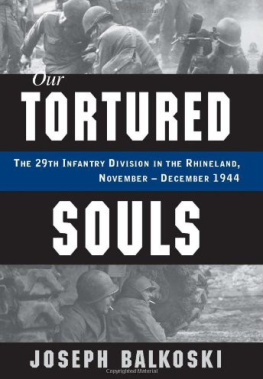This study analyzes the operational performance of the 28th Infantry Division during a period of high intensity combat in the European Theater of Operations. The focus is on the difficulties the division experienced within its subordinate infantry units. Infantrymen, though comprising less than 40 percent of the division's total strength, absorbed almost 90 percent of all casualties. The high casualty rate within infantry units severely curtailed the operational performance of the division. The difficulties the 28th experienced were commonplace in the European theater. Compounding the problem was the inadequate number of divisions in the U.S. Army force structure. This inadequacy forced divisions to remain in combat for excessive durations, greatly increasing battle and non-battle casualties. The army's personnel system further contributed to the problems infantry divisions experienced within their infantry units. It failed to provide sufficient numbers of infantry replacements in a timely manner and there was widespread dissatisfaction with the quality of infantry replacements. This study shows that the U.S. Army failed to realize both the importance of infantry units to the war effort and the severity of combat on the modern battlefield. The result was an infantry force structure poorly designed to accomplish its wartime mission.
CHAPTER 1 INTRODUCTION
If you take a flat map and move wooden blocks upon it strategically , the thing looks well, the blocks behave as they should. The science of war is moving live men like blocks. And getting the blocks into place at a fixed moment. But it takes time to mold your men into blocks and flat maps turn into country where creeks and gullies hamper your wooden squares. They stick to the brush, they are tired and rest, they straggle after rip blackberries, and you cannot lift them up in your hand and move them. A string of blocks curling smoothly around the left of another string of blocks and crunching it up. It is all so clear in the mind, but the orders are slow, the men in the blocks are slow to move, when they start they take too long on the way. The general loses his starts and the block-men die in unstrategic defiance of martial law, because still used to just being men, not block parts.
This thesis will examine the performance of infantry units assigned to the U.S. 28th Infantry Division from September to December 1944. During this four-month period of combat, the 28th Infantry Division endured some of the toughest fighting of the Second World War. It fought three major offensive and defensive battles against a skilled and determined enemy, at a cost of almost 20,000 casualties. The division's soldiers also suffered heavily from the debilitating effects of the extremely harsh winter of 1944-45.
The focus of this thesis will concentrate on the rise and fall of infantry unit performance during this period and will consider two major influences . Those influences include manning the force and sustaining the health and morale of combat infantrymen. This thesis will also attempt to analyze how much control the 28th Division exercised over these factors. It will also analyze possible steps the division might have taken to maintain a consistent level of infantry performance.
Before proceeding further , it is important to answer three key questions for the reader. These questions are critical to understanding the scope and relevance of this thesis. First, why is the thesis restricted to the performance of the division's infantry units? Secondly, why was the 28th Infantry Division selected for study? Lastly, out of all the factors that contribute to unit performance, why were only the factors of manning and sustaining the health and morale of the force selected for study?
The answer to the first question is based on the organization and employment of the infantry division during World War II . This division had an assigned strength of less than 15,000 men. Out of this strength, the division had two primary sources of combat power, its infantry and artillery units. The division normally had other combat elements attached to it, such as tank and tank destroyer units, but these units changed frequently based on the mission of the division. They were also outside the division's day- today responsibility for manning.
Of the two primary sources of combat power , the infantry element experienced the most significant variations in performance. The division's 112th Infantry Regiment provides an excellent example of how greatly unit performance could vary. During the arduous Hrtgen Forest Campaign in November 1944, German defenses, battle fatigue and trenchfoot wreaked havoc on the regiment. Two of its three battalions fled from the battlefield in a complete state of panic. One month later, the 112th won the Presidential Unit Citation for its heroic defensive stand during the Battle of the Bulge.
In contrast , the division's artillery element maintained a consistently high level of performance. As the war went on, artillery in the 28th got stronger and stronger. American artillery was a tremendous success story during the war. The performance of this combat arm drew praise from both Allied and German participants. Surveys of American soldiers also rated the performance of artillery units as very high level.
Thus , if an infantry division was to fail in combat because of unit performance, it was most likely due to the failure of its infantry units. Coming to grips with the possible reasons for failure in these units is a complicated and uncertain business. Certainly any discussion of unit performance must normally address such factors as leadership, tactics, and training. When analyzing operations in the European Theater of Operations (ETO) however, there was one factor that was consistently present. That factor was the almost routine destruction of the infantry companies and battalions of infantry divisions. The personnel of these units comprised less than 40 percent of the division strength, yet they suffered 80 percent of all casualties. Replacements flowed in to fill these shattered units and the destruction continued once more. This environment produced incredible leadership and organizational challenge to maintain even the most basic level of unit proficiency.
In contrast , artillery and other divisional units comprised a very low percentage of the total casualties. These units were much less likely to suffer the dramatic losses in unit cohesion and effectiveness that result from heavy casualties. Their position on the battlefield also provided them with a measure of security and access to shelter denied the frontline infantryman. Personnel in these units were therefore less prone to suffer from the effects of combat that produced such illnesses as battle fatigue combat exhaustion and trenchfoot. Taken as a whole, it is easy to understand why the performance of infantrymen was so inconsistent and why it is important to study the conditions that might contribute to his failure.

